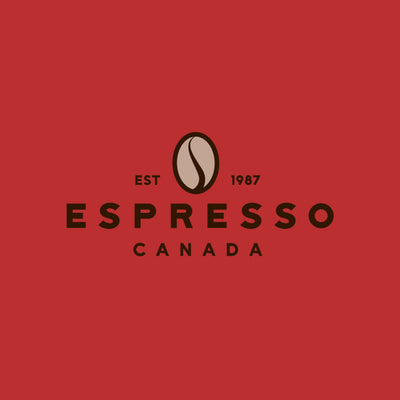Espresso vs Expresso: Which is it?
People take their coffee seriously. For many it’s a highlight (or several) of the day, so it’s important to get it right. Fussiness over the taste of coffee is matched by fussiness over its terminology – though the fussers aren’t necessarily the same people. Ask for an expresso in public and you’ll put frowns on the faces of perfect strangers. Some will judge you, silently or otherwise, for not saying espresso with an ‘s’ instead. But should you? And why are both words used?
The Difference Between Espresso and Expresso
Espresso comes from Italian caffé espresso, and means ‘pressed out’ – the coffee is made by pushing pressurised water through the beans. But because it’s so similar to English express, which often refers to a rapid service (express train, express delivery, express lane), there’s a common belief that it has to do with speed – an espresso as a quick coffee on the go. So the ‘x’ infiltrates the spelling and pronunciation of espresso, leading to expresso.
Because we have come across so many clients and people who mispronounce and spell espresso incorrectly, we want to talk about espresso and why it’s so important. We’re always happy to have an excuse to talk about espresso, and the big language thing to note is that it’s pronounced “espresso,” not “expresso.” We even saw some people spell it ‘esspreso’, ‘exspresso’, ‘espreso’, ‘expreso’, which is just utterly offensive.
‘Espresso’ Is Not Related to ‘Express’
I think people might link the word “express” with “espresso” because espresso can be a fast way to get caffeine, which can make you feel faster. But “espresso” primarily comes from the Italian word for "pressed." The Oxford English Dictionary says it literally translates to “pressed coffee.” It's about how the coffee is made. "Espresso" is peripherally related to the word “express” since "express" and "pressed" both come from the same Latin root, but since "espresso" comes to English from Italian, its direct origin is the word for "pressed."
Usage purists are not happy about expresso being in common use. To them, it’s wrong, end of story, and anyone who uses the word is making a careless linguistic error and a social faux pas. This may seem a reasonable stance. But expresso has been in print since at least 1955 (appearing first in the New York Times, no less), which is almost as long as espresso has been in the language.
‘Expresso’ May Be More Common in British English
Oxford Dictionaries calls expresso ‘incorrect’, but the OED, Merriam-Webster, American Heritage Dictionary, and Macmillan Dictionary all list it neutrally as a variant, meaning it also lists “expresso” as another form of the word. In a search of words published in Google Books, “expresso” seems like it’s more acceptable in British English than in American English, although it’s definitely in the minority in both regions.
Copy-editors and proofreaders will keep the variant spelling’s numbers down somewhat in published texts, but in speech and casual writing you can expect it to hold its own. If expresso continues to establish itself in general usage, it will eventually be accepted as standard by all but the most conservative critics.
‘Expresso’ Is the Standard in France
In France, you order an "expresso."
Other Ways People Spell ‘Espresso’ That Are Just Wrong
If you spell espresso as: esspreso, exspresso, espreso, expreso or anything that is not espresso, you should just stick to American coffee.
When people spell espresso as esspreso, exspresso, espreso, expreso or esspreso it infuriates others. It’s a total disrespect to espresso and even expresso at that! We would rather see it spelt expresso than esspreso, exspresso, espreso, expreso or esspreso to be totally honest. But if you spell it correct, espresso, we will be very happy and so will literally everyone else around you. Espresso is a sanctuary that cannot be tampered with.
When to Use Espresso
What is espresso? Espresso is a noun. It refers to a type of coffee that is brewed with hot, pressurized water and finely ground coffee beans.
Espresso has a stronger flavor than other types of brewed coffee and is generally thicker. It also has more caffeine. However, servings of espresso are much smaller than servings of other coffee drinks, negating the caffeine advantage.
Here are some examples of espresso in a sentence.
- When I drive to work in the morning, I always see a line of cars at the drive-through espresso shack near my house.
- Emily brought her laptop to the coffee shop down the street, and drank an espresso while she studied for her test.
- If the White House is at war with the news media, it looks as though the fourth estate has an A-list ally in the fight: Actor Tom Hanks, who delivered a fancy new espresso machine to the White House press gallery on Thursday. -The Washington Post
Espresso is an Italian invention, with the first machines developed in Italy around the dawn of the 21st century. Over the next 100 years, coffee drinkers all over the world began to love the powerful drink, too.
When to Use Expresso
What is expresso? Expresso is a spelling variant of espresso. The French spell the word this way, but in America, it originated as a misspelling. It is such a common mistake in spoken English that many speakers don’t recognize it as nonstandard. Indeed, some dictionaries even list it as an alternative spelling.
While espresso is closer to the original Italian, expresso still closely approximates its meaning. The word express can refer to speed, but it can also refer to individual service (like the phrase expressly for you). Both of these meanings are carried over from the Italian term.
Many English users (especially the kind who become editors) still view expresso is a misspelling, though. Unless you have a good reason to use expresso, you should avoid it.
Trick to Remember the Difference Between Espresso and Expresso
If you are writing for an English audience, you should use espresso. Expresso is still not universally recognized as an alternative spelling, although its acceptance may grow in the coming years.
Remember that espresso has an extra S, like the word sip. The proper way to drink espresso is to sip it, preferably with an air of elitist pretension. By linking espresso with sip in your mind, you will always know how to spell both of these words.
Stick to the ‘Espresso’ Pronunciation
Is it expresso or espresso? Espresso is a noun that refers to a certain type of coffee.
- Expresso is a common misspelling based on a mispronunciation of this word.
- If you are writing in English, you should, only ever use espresso.
It’s a thing that I know irritates a lot of people, so it’s best to stick to the “espresso" pronunciation, unless your goal is to annoy people. It will make you fit in more with Italians and their culture, and make you stick out less like a sore thumb when ordering an espresso in Italy. If you are writing in English, you should, only ever use espresso.
Remember, it’s not expresso, esspreso, exspresso, espreso, expreso or esspreso, it’s ESPRESSO!




